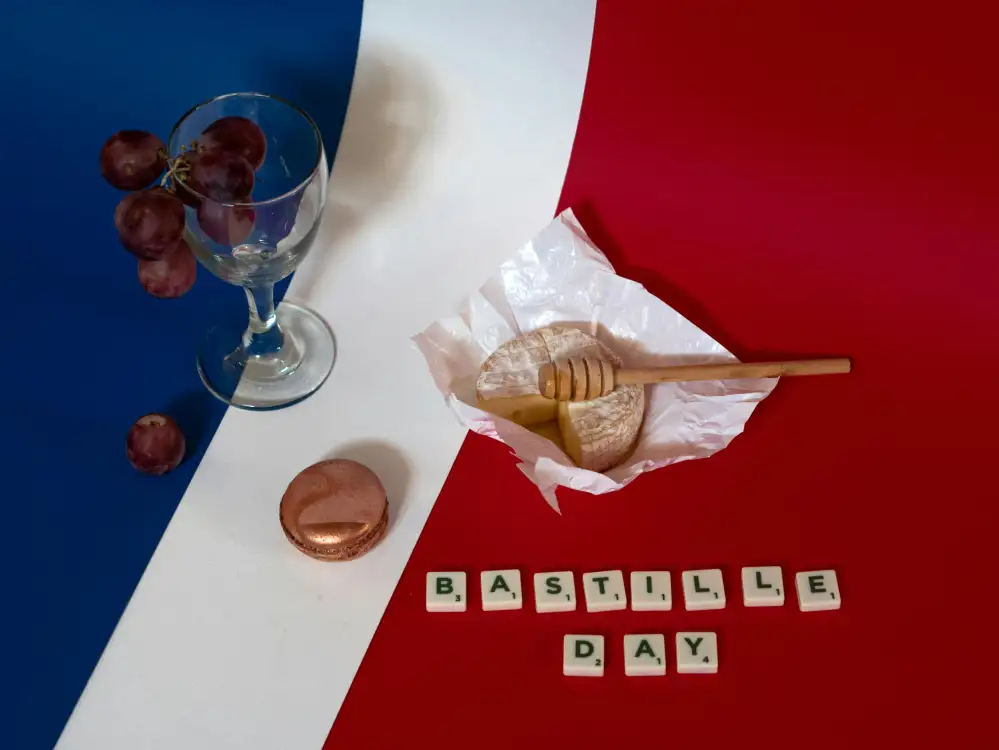Indulge in Regal Delights: Exploring the Exquisite Coronation Food Fit for Royalty

Coronation food holds a special place in the history of royal celebrations. It is a culinary tradition that dates back centuries, encompassing a rich tapestry of flavors and techniques fit for royalty. This exquisite cuisine has been enjoyed by kings and queens, emperors and empresses, as they ascended to their thrones in grand ceremonies known as coronations. These sumptuous feasts not only celebrated the new monarch but also showcased the culinary prowess of the kingdom. Join us on a journey to explore the world of coronation food and indulge in regal delights fit for royalty.
Historical Significance of Coronation Food
The historical significance of coronation food dates back centuries, symbolizing the grandeur and power of royalty. The tradition of serving elaborate feasts during coronations can be traced back to ancient civilizations such as Egypt and Rome. In medieval Europe, coronation banquets were extravagant displays of wealth and opulence, showcasing the monarch's ability to provide for their subjects. These feasts also served as a means of solidifying alliances and impressing foreign dignitaries. Over time, coronation food evolved to incorporate regional specialties and cultural traditions, reflecting the diverse culinary heritage of each kingdom or empire. Today, coronation food continues to be a testament to the rich history and traditions associated with royal ceremonies.
Traditional Dishes Served at Coronations
Coronations have always been grand affairs, and the food served during these momentous events is no exception. Traditional dishes served at coronations often reflect the culinary heritage of the reigning monarch's country. For example, in England, one classic dish that has been served for centuries is coronation chicken.
Coronation chicken is a cold dish made with cooked chicken, mayonnaise, curry powder, and other spices. It was first created for Queen Elizabeth II's coronation in 1953 by Constance Spry and Rosemary Hume. This flavorful dish quickly became a favorite among guests and has since become synonymous with coronation feasts.
Another popular traditional dish served at coronations is roasted meats, such as beef or lamb. These meats are often cooked to perfection and accompanied by rich gravies and sauces. Roasted vegetables like potatoes and carrots are also commonly served as side dishes.
In addition to meat dishes, seafood is often featured on the menu at coronations. Smoked salmon, oysters, and lobster are frequently enjoyed by guests as luxurious delicacies.
For dessert, fruitcakes are a staple at coronation banquets. These rich cakes are often soaked in alcohol for months before being served on the big day. They are typically adorned with intricate icing designs and topped with royal emblems or symbols.
These traditional dishes not only showcase the culinary traditions of the host country but also symbolize abundance, prosperity, and regality. They represent the opulence associated with royal celebrations throughout history.
As times change and tastes evolve, modern adaptations of traditional dishes have emerged at recent coronations. Chefs now experiment with fusion cuisine by incorporating international flavors into classic recipes while still paying homage to tradition.
Whether it's indulging in succulent roasted meats or savoring a slice of decadent fruitcake, experiencing these traditional dishes allows us to connect with centuries-old customs and celebrate the grandeur of coronations past and present.
Symbolism and Rituals Associated with Coronation Food
Coronation food is not merely a feast for the palate; it is steeped in symbolism and rituals that reflect the grandeur and sacredness of the occasion. Each dish served carries significant meaning, adding to the overall spectacle of the coronation ceremony.
One such symbol is the use of spices in coronation dishes. Spices were historically considered precious and valuable, representing wealth and power. They were used abundantly to showcase the opulence of the monarchy. For example, saffron was often used to give a golden hue to dishes, symbolizing prosperity and abundance.
Another important aspect is the inclusion of traditional ingredients that hold cultural significance. These ingredients are carefully chosen to represent different regions or nations within the kingdom, fostering unity and inclusivity. For instance, haggis, a traditional Scottish dish made from sheep's heart, liver, and lungs, represents Scotland's contribution to British cuisine.
Rituals also play a vital role in coronation food. One such ritual is the offering of a specially baked ceremonial bread known as "the royal loaf." This bread is typically adorned with intricate designs or even crowned with jewels, symbolizing prosperity and divine blessings upon the monarch.
Furthermore, certain dishes are served in a particular order during the coronation banquet. This sequence follows a strict protocol that dates back centuries. The first course often consists of lighter fare like soups or salads, gradually progressing towards more substantial dishes like roasted meats or game birds. This progression symbolizes the ascent to power and authority.
Overall, symbolism and rituals associated with coronation food serve as a reminder of tradition, heritage, and continuity within monarchy. They add an extra layer of significance to an already majestic event, making it an unforgettable experience for both royalty and their subjects alike.
Modern Adaptations and Influences on Coronation Food
In recent years, there has been a noticeable shift in the way coronation food is prepared and presented. Chefs have embraced contemporary culinary techniques and flavors, bringing a modern twist to traditional dishes. This evolution reflects changing tastes and preferences while still honoring the regal heritage of coronation feasts.
One notable influence on modern coronation food is the global fusion of flavors. As societies become more interconnected, chefs have started incorporating ingredients and cooking styles from different cultures into their creations. For example, Indian spices like cardamom and turmeric are now commonly used to add depth and complexity to traditional British dishes.
Another significant adaptation is the emphasis on seasonal and locally sourced ingredients. Chefs are increasingly conscious of sustainability and environmental impact, choosing to showcase the best produce available during specific times of the year. This not only enhances the freshness and flavor of the dishes but also supports local farmers and producers.
Furthermore, there has been a growing focus on dietary restrictions and preferences. With an increasing number of people adopting vegetarian or vegan lifestyles, chefs have developed plant-based alternatives for classic coronation dishes. These adaptations ensure that everyone can partake in the royal feast without compromising their dietary choices.
Additionally, advancements in technology have revolutionized the presentation of coronation food. Chefs now utilize innovative plating techniques, molecular gastronomy, and edible decorations to create visually stunning masterpieces that rival works of art. These modern presentations enhance the overall dining experience by engaging multiple senses.
Overall, modern adaptations have breathed new life into coronation food while preserving its essence. By embracing global influences, prioritizing sustainability, accommodating dietary needs, and utilizing cutting-edge techniques, chefs continue to elevate this regal cuisine for contemporary palates.
How to Recreate Coronation Food at Home
Recreating Coronation Food at home allows you to experience the grandeur and flavors fit for royalty. Start by researching traditional recipes from past coronations, such as the famous Coronation Chicken. This dish combines succulent chicken with a creamy curry sauce, perfect for sandwiches or salads.
Next, explore other classic dishes like Beef Wellington, a tender beef fillet wrapped in puff pastry, or Salmon Coulibiac, a delicious combination of salmon, rice, and mushrooms encased in pastry. These dishes require some culinary skills but are worth the effort.
Don't forget to include side dishes like roasted potatoes and seasonal vegetables. For dessert, try making a traditional fruitcake or a rich trifle layered with sponge cake, custard, fruit, and whipped cream.
To truly capture the essence of coronation food, pay attention to presentation. Use elegant serving platters and garnish dishes with fresh herbs or edible flowers for an extra touch of sophistication.
Lastly, consider pairing your meal with appropriate beverages. Champagne or sparkling wine is always a great choice for toasting the occasion. Alternatively, opt for traditional British drinks like Pimm's Cup or Earl Grey tea.
Recreating coronation food at home allows you to celebrate history while indulging in regal delights. Enjoy this culinary journey fit for royalty!
Tips for Hosting a Coronation-inspired Feast
1. Research the Era: Before hosting a coronation-inspired feast, delve into the history and traditions of the specific era you wish to recreate. This will help you understand the culinary preferences, ingredients, and cooking techniques of that time.
2. Plan a Royal Menu: Design a menu that reflects the grandeur and opulence associated with coronations. Include traditional dishes such as roast meats, game birds, rich sauces, and elaborate desserts like fruit tarts or puddings.
3. Pay Attention to Presentation: Serve your dishes on elegant tableware, using silverware and crystal glasses to create a regal atmosphere. Garnish plates with edible flowers or gold leaf for an extra touch of sophistication.
4. Incorporate Symbolism: Add symbolic elements to your feast by including ingredients that represent power or nobility. For example, use saffron for its association with wealth or incorporate purple-hued foods like grapes or beets to symbolize royalty.
5. Create a Grand Ambiance: Decorate your dining area with luxurious fabrics, ornate centerpieces, and candlelight to evoke the ambiance of a royal banquet hall. Play classical music in the background to enhance the regal atmosphere.
6. Dress for the Occasion: Encourage your guests to dress in formal attire or attire inspired by the chosen era. This will add an extra layer of authenticity and make everyone feel like they are attending a true royal affair.
7. Offer Signature Cocktails: Craft specialty cocktails inspired by historical figures or events related to coronations. Use premium spirits and garnish them with edible gold flakes or crown-shaped stirrers for an extravagant touch.
8. Engage in Conversation: As you enjoy your feast, engage your guests in discussions about coronations throughout history, sharing interesting facts and stories related to royal ceremonies.
By following these tips, you can host a memorable coronation-inspired feast that allows you and your guests to indulge in the regal delights of the past while celebrating the rich traditions of royalty.
In conclusion, the rich history and cultural significance of coronation food make it a truly unique and regal culinary experience. From the ancient traditions to the modern adaptations, coronation food has evolved over time, reflecting the changing tastes and influences of different eras.
By indulging in these exquisite dishes, we not only savor the flavors fit for royalty but also pay homage to centuries-old traditions. Whether recreating coronation food at home or hosting a grand feast inspired by these royal delicacies, we can immerse ourselves in the opulence and elegance associated with royalty.
So let us raise our glasses to celebrate the legacy of kings and queens through coronation food. Let us relish in the sumptuous feasts that have graced royal tables throughout history. For in doing so, we honor the timeless allure of royalty and embark on a gastronomic journey fit for kings and queens.
Published: 06. 02. 2024
Category: Home



